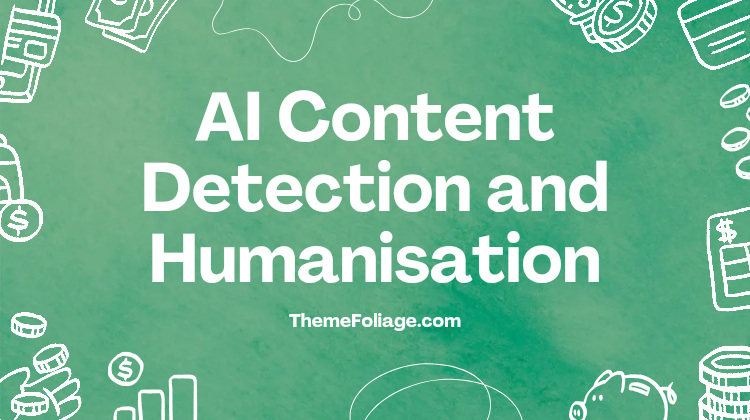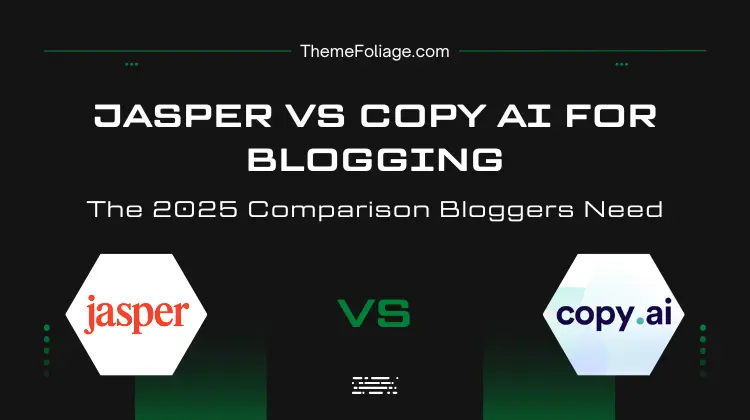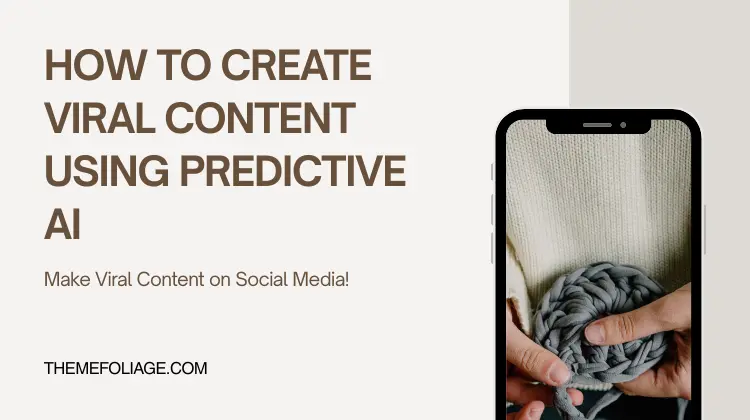Artificial intelligence has transformed how content is created, optimised, and published. But in 2025, search engines and readers are more critical than ever.
With advanced AI content detection tools like Originality.ai, Copyleaks, and GPTZero evolving rapidly, producing generic, robotic text can harm both SEO performance and brand credibility.
This is where AI content humanisation comes in blending AI efficiency with authentic human tone and expertise.
In this article, you’ll learn how to make your content undetectably human while maintaining Google’s E-E-A-T (Experience, Expertise, Authoritativeness, Trustworthiness) standards.
1. Understanding AI content detection
AI detectors analyse linguistic patterns, predictability, and token distribution to identify machine-written text. They typically evaluate:
- Perplexity: How unpredictable or complex a sentence is.
- Burstiness: Variations in sentence length and structure.
- Contextual coherence: Whether ideas flow naturally.
- Stylistic uniformity: AI content often sounds too consistent or “flat.”
When a piece of content scores low in human-like variation or displays algorithmic predictability, detection tools can flag it as AI-generated, even if it’s manually edited later.
2. Why Google cares about authenticity
Google has made it clear: AI-generated content is not banned. However, what Google does penalise is low-quality, mass-produced, or deceptive content that lacks originality or expertise.
“Using automation, including AI to generate content is acceptable when it’s meant to help people and not manipulate search rankings.” — Google Search Central, 2024
Therefore, the goal isn’t to hide from detection but to elevate content quality so it reflects genuine experience and thought leadership.
3. The risks of overusing AI in SEO content
AI tools like ChatGPT, Jasper, or Copy.ai are incredible for ideation and structure. Yet, overreliance can lead to serious problems:
- High duplication or semantic similarity across websites.
- Generic tone lacking brand personality.
- Inaccurate or outdated information.
- Thin content that fails to satisfy user intent.
Such issues make it easier for detection tools and human editors to identify AI involvement.
4. How to humanise AI-generated content
Humanising AI content is both an art and a process. It requires editorial input, emotional nuance, and contextual awareness. Here’s how to make your AI-assisted writing truly human:
Step 1: Add real human experiences
Insert personal insights, use cases, or customer anecdotes. Authentic experiences build trust and differentiate your article from generic AI text.
Step 2: Use natural tone and contractions
AI-generated sentences are often too formal. Use conversational elements such as “you’ll,” “it’s,” or “we’re” to make the tone natural and relatable.
Step 3: Vary sentence length and rhythm
Alternate between short, punchy statements and longer, descriptive ones. This increases “burstiness” and mimics human writing cadence.
Step 4: Include emotional triggers
Humans express empathy, curiosity, and enthusiasm. Use emotional words and sensory language that evoke reactions and engagement.
Step 5: Reframe AI ideas with critical analysis
Instead of copy-pasting AI output, interpret it. Add commentary, challenge assumptions, or expand ideas with evidence or reasoning.
Step 6: Cite credible sources
Google’s E-E-A-T favours verifiable information. Reference reputable studies, data, and authors to enhance authority.
Step 7: Edit for flow, not just grammar
AI writing tools often lack logical transitions. Edit manually to ensure ideas connect smoothly and naturally.
5. AI detection tools worth knowing in 2025
Here are the most reliable AI detection tools marketers and editors are using this year:
- Originality.ai – Best for SEO teams and publishers; provides plagiarism + AI detection.
- GPTZero – Designed for educators, measures burstiness and perplexity effectively.
- Copyleaks – Offers multilingual detection and Chrome extensions.
- Writer.com Detector – Built for enterprise content workflows.
- Content at Scale AI Detector – Specialised for long-form marketing content.
Use these tools as a quality assurance checkpoint, not a barrier. The objective is to improve naturalness, not bypass detection.
6. Combining AI with human creativity
The most effective content strategies in 2025 don’t reject AI, they refine it. Treat AI as your co-writer, not your replacement. Let AI handle:
- Topic ideation and outlines.
- Initial draft generation.
- Keyword suggestions and semantic clustering.
Then, rely on human editing for:
- Adding opinions, examples, and brand tone.
- Ensuring factual accuracy and logical flow.
- Enhancing emotional depth and storytelling.
This balance leads to content that’s scalable yet authentic.
7. Measuring authenticity and user engagement
Humanised content doesn’t just pass AI detectors, it performs better. You can track authenticity impact through metrics like:
- Average engagement time (higher for natural content).
- Bounce rate (lower when content feels genuine).
- Social shares and comments (emotional resonance).
- Return visitors (trust and consistency).
Authentic content aligns with user intent and boosts SEO longevity.
8. The role of E-E-A-T in AI-era SEO
Google’s E-E-A-T is the ultimate benchmark for trustworthiness. Whether AI-assisted or human-written, every article should reflect:
- Experience: Real-world examples or case studies.
- Expertise: Author bios, credentials, or professional insights.
- Authoritativeness: Citing trusted external sources.
- Trustworthiness: Transparent sourcing and accurate data.
When your content demonstrates these qualities, its origin, human or AI, becomes less important.
Conclusion
In 2025, AI content detection and humanisation define the balance between efficiency and authenticity. Search engines are not against AI, they’re against mediocrity.
By enriching machine-generated drafts with genuine insight, human tone, and editorial care, you can create SEO content that feels real, reads naturally, and performs consistently.
Authenticity isn’t about fooling detectors. It’s about respecting your audience. Also, read this article – Measuring SEO ROI.



